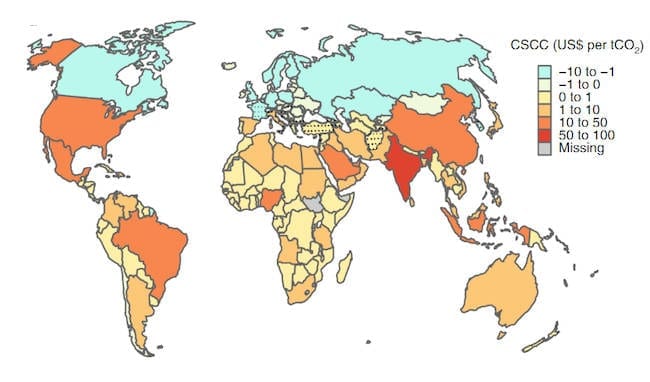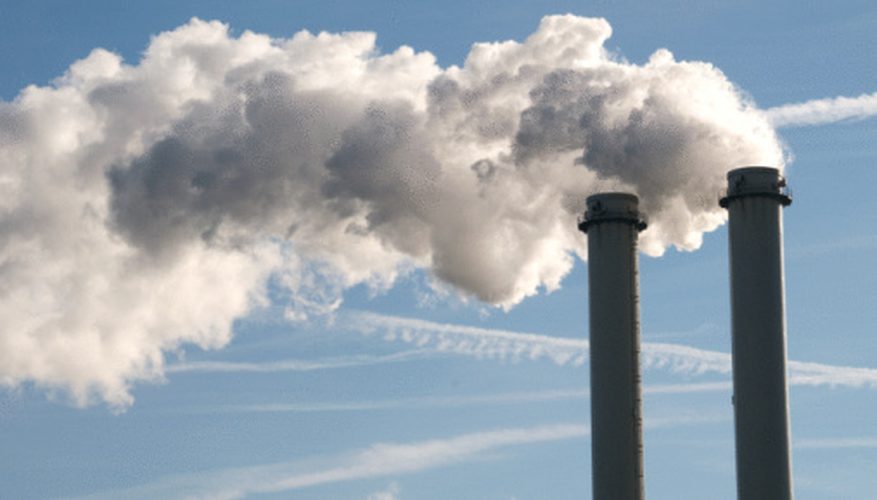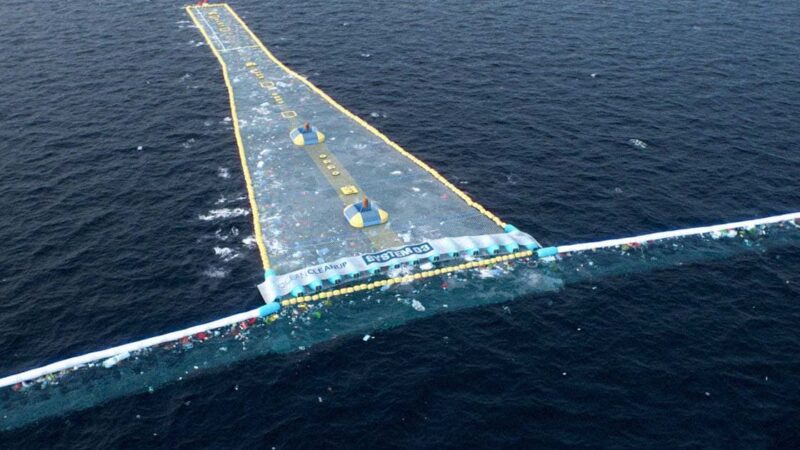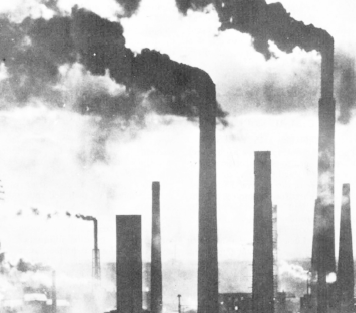How the social cost of carbon improves policies to address climate change

Climate change causes devastating impacts: extreme weather events like flooding and deadly storms; the spread of disease; sea level rise; increased food insecurity; and other disasters.
These impacts can cost businesses, families, governments and taxpayers hundreds of billions of dollars through rising health care costs, destruction of property, increased food prices, and more.
The social cost of carbon is a measure of the economic harm from those impacts, expressed as the dollar value of the total damages from emitting one ton of carbon dioxide into the atmosphere.
The current central estimate of the social cost of carbon is roughly $40 per ton. While this is the most robust and credible figure available, it does not yet include all of the widely recognized and accepted scientific and economic impacts of climate change. For that reason, many experts agree [PDF] this is far lower than the true costs of carbon pollution.
The value of calculating the cost
This vital tool helps federal agencies make sound decisions to protect current and future generations of Americans. By properly accounting for the damages caused by carbon pollution, agencies can properly evaluate policies that affect greenhouse gas emissions.
Private sector leaders have long considered the serious impacts of climate change when making decisions about capital investments and even corporate strategy. Many of the world’s largest companies already use internal measures much like the social cost of carbon in their own decision-making processes.
In the same way, the social cost of carbon can help inform and improve the decisions the federal government makes. A number of other countries, including Canada, Mexico, and the United Kingdom, have similar estimates of the social cost of carbon for use in government policy making.
A decades-long bipartisan history
Beginning in the early 1980’s, former President Ronald Reagan called for federal agencies to analyze the benefits and costs of their major regulatory actions, and since then, both Democratic and Republican presidents have done the same.
Under the George W. Bush Administration, federal agencies including the Environmental Protection Agency and the Department of Transportation began to develop their own estimates of the social cost of carbon.
After a 2008 U.S. Court of Appeals decision required the federal government to account for the economic effects of climate change in regulatory cost-benefit analyses, an Interagency Working Group began in 2009 to develop a uniform estimate for the social cost of carbon that could be used consistently by agencies across the government.
Rigorous process to develop estimate
The federal government’s estimate of the social cost of carbon was developed through an extensive, rigorous process. The Interagency Working Group included representatives from all relevant executive branch agencies – from the Department of Agriculture to the Council of Economic Advisors – and developed the social cost of carbon by relying on the latest peer-reviewed science and economics available.
The process allowed for repeated public comment as well as input from the National Academies of Sciences, Engineering and Medicine. Since then, the Interagency Working Group has periodically updated its modeling to ensure that the social cost of carbon remains informed by current science.
More recently, the National Academies conducted a thorough assessment to provide guidance on updating the tool and suggestions for continuing to build on and strengthen it.
The Interagency Working Group estimate of the social cost of carbon provides a consistent, transparent framework to help make sound decisions, across the federal government, based on the most rigorous scientific data and economic modeling.
How it’s put into practice
Since the development of the uniform estimate in 2010, federal agencies have used the social cost of carbon to analyze the impacts of roughly 100 federal actions that impact greenhouse gas pollution, from car and truck emissions standards, to mercury and other toxic pollutants from power plants to efficiency standards to household appliances.
A number of states are also using the social cost of carbon in a variety of ways, including to improve decision-making about investments in their energy systems by properly accounting for the value of low carbon fuels and technologies.
The economic benefits from reducing carbon dioxide emissions can be enormous. For example, the Environmental Protection Agency has projected the value of climate pollution mitigation efforts from three recent vehicle rulemakings at between $78 billion and $1.2 trillion.
Court upholds the use of social cost

In August 2016, a federal court upheld the use of the social cost of carbon to inform vital protections against the harmful impacts of climate change.
The U.S. Court of Appeals for the Seventh Circuit affirmed in its opinion that the Department of Energy was correct to include the value of the social cost of carbon in its analysis. The judges concluded that they had “no doubt” that Congress intended for the agency to have the authority consider the social cost of carbon, reinforcing the suitability of using the tool in future rulemakings.
The risk of rolling back progress
As the National Academies recommended, experts should continue to update and strengthen the social cost of carbon estimates to more fully account for serious climate-related damages.
A robust social cost of carbon is essential for good government – it’s an important foundation for good decision-making, based on long-standing, common-sense economic principles.
Any effort to roll back the social cost of carbon would leave decisions to individual agencies, reducing accountability and transparency while creating regulatory confusion. Weakening or eliminating it would conceal the true costs of carbon pollution, incorrectly skewing the analysis and biasing decision-making away from crucial climate safeguards.
Featured Image Credit: Sciencing


